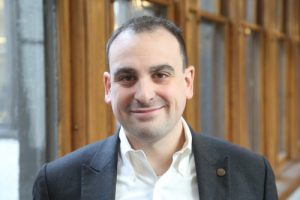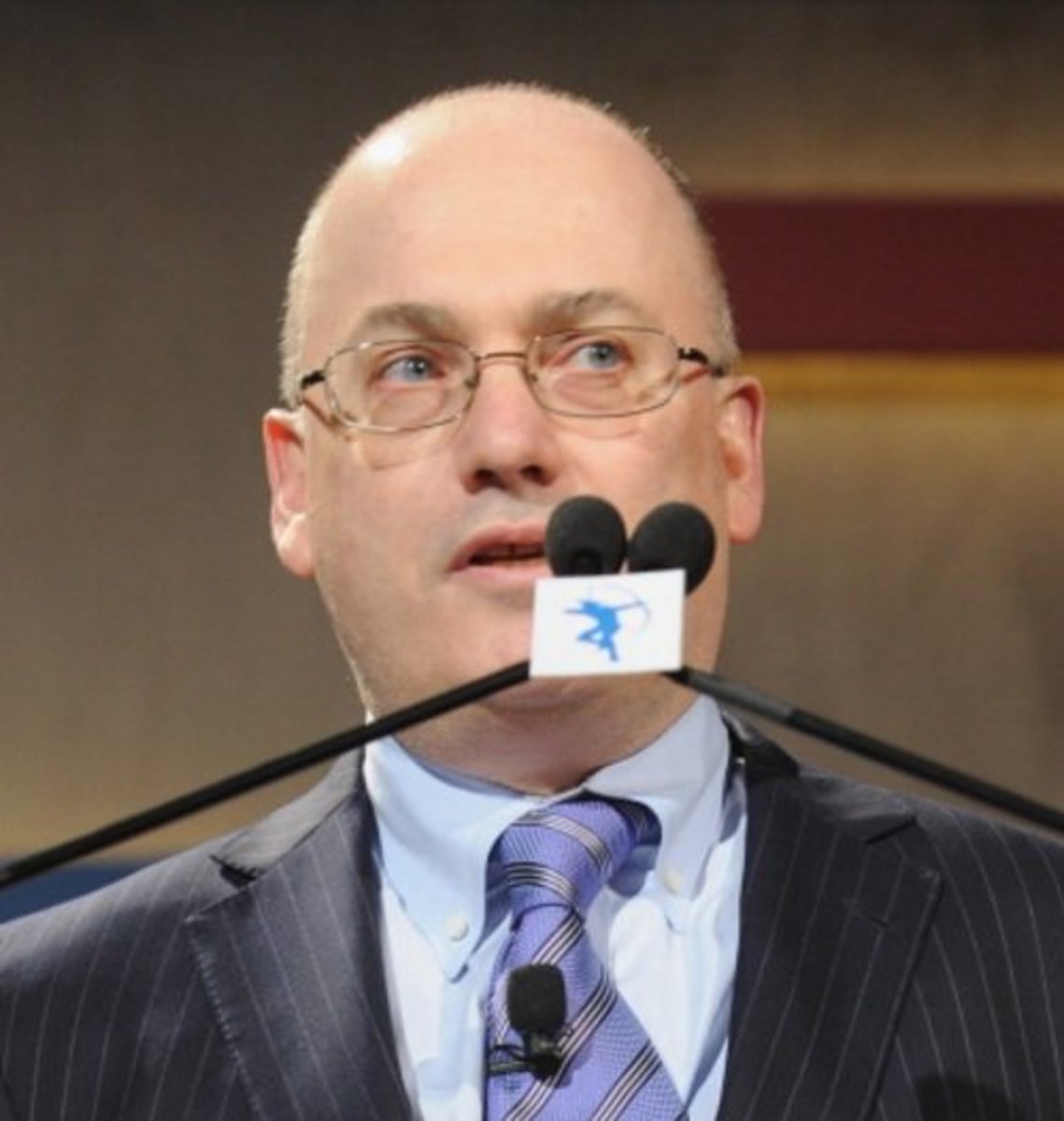Justice Ruth Bader Ginsburg (Photo via Wikimedia Commons)
“This album is dedicated to all the teachers that told me I’d never amount to nothing / To all the people that lived above the buildings that I was hustling in front of / Called the police on me when I was just trying to make some money to feed my daughter.” — Notorious B.I.G.
On Friday, the indomitable SCOTUS Justice Ruth Bader Ginsburg, 87, succumbed to metastatic pancreatic cancer. We all have a cancer story within our family, friend group, or social network so when we hear of another case where cancer takes the life of a luminary it can shake us to our core.
This week, I would like to pay tribute to the #NotoriousRBG by highlighting some of my favorite facts about her life and legacy. Without further ado, here is my Top 5 T.A.N. List for the late, great RBG:
1. “In a CNN interview, her childhood friends Ann Kittner and Harryette Helsel reminisced about how, prior to Ginsburg’s name being known worldwide, they simply knew her as their friend Kiki.
“Justice Ginsburg, I cannot call Ruth. We call her Kiki,” Helsel said. Ginsburg also has another nickname that proves how badass she is. The Notorious RBG biography mentions that she’s also referred to as T.A.N., which stands for “tough as nails.”
The title was given to her by her long-time personal trainer, Bryant Johnson, who remains in awe of her physical strength. “I mean, she’s not the heaviest or stoutest lady, but she’s tough,” Johnson said. “She works just as hard in the gym as she does on the bench.” Now T.A.N. is even more warranted, considering Ginsburg quickly began working out again soon after being hospitalized for three fractured ribs late [2018]. — Tatiana Tenreyro, Bustle
2. Born in Brooklyn, Ruth Bader went to public schools, where she excelled as a student — and as a baton twirler. By all accounts, it was her mother who was the driving force in her young life, but Celia Bader died of cancer the day before the future justice would graduate from high school.
Then 17, Ruth Bader went on to Cornell University on a full scholarship, where she met Martin (aka “Marty”) Ginsburg. “What made Marty so overwhelmingly attractive to me was that he cared that I had a brain,” she said.
After her graduation, they were married and went off to Fort Sill, Oklahoma, for his military service. There Mrs. Ginsburg, despite scoring high on the civil service exam, could only get a job as a typist, and when she became pregnant, she lost even that job.
Two years later, the couple returned to the East Coast to attend Harvard Law School. She was one of only nine women in a class of more than 500 and found the dean asking her why she was taking up a place that “should go to a man.”
At Harvard, she was the academic star, not her husband. The couple were busy juggling schedules and their toddler when Marty Ginsburg was diagnosed with testicular cancer. Surgeries and aggressive radiation followed.
The experience also taught the future justice that sleep was a luxury. During the year of her husband’s illness, he was only able to eat late at night; after that he would dictate his senior class paper to her. At about 2 a.m., he would go back to sleep, Ruth Bader Ginsburg recalled in an NPR interview. “Then I’d take out the books and start reading what I needed to be prepared for classes the next day.” — Nina Totenberg, NPR
3. Tied for first in her class at Columbia, she was unable to get a job practicing law at a New York firm. But, far from being defeated by discrimination, she decided to study it. She began teaching at Rutgers in 1963; in 1969, the year her second child entered nursery school, she was promoted to full professor, and began volunteering for the A.C.L.U., where she later headed the Women’s Rights Project. In 1972, just two months after the Court handed down its ruling in Reed v. Reed, Ginsburg became the first woman to hold a full professorship at Columbia.
“The only confining thing for me is time,” she told the New York Times. “I’m not going to curtail my activities in any way to please them.” While teaching at Columbia, Ginsburg argued six cases before the Court, and won four. — Jill Lepore, The New Yorker
4. When it came to treating her cancer, the justice said she followed the advice of former colleague Sandra Day O’Connor — who returned to work at the Supreme Court just nine days after her breast cancer diagnosis. “She said when you’re up to chemotherapy, you do it on Friday, Friday afternoon. You’ll get over it over the weekend, and you’ll be able to come to the court on Monday,” Ginsburg told a group of law students in 2009.
“So I’ve been following her advice meticulously.” Ginsburg also routinely brushed off concerns about her health, and dismissed critics who said she should retire. Perhaps the most memorable example came in 2009, when she attended a televised speech by then-President Barack Obama while recovering from pancreatic cancer.
The justice said she made the appearance partially to remind the American public that women sat on the Supreme Court bench, but noted that it was also an effort to prove wrong then-Kentucky Sen. Jim Bunning, who had made derogatory comments about her health. “I also wanted them to see I was alive and well, contrary to that senator who said I’d be dead within nine months,” Ginsburg said at the time. — Jamie Ducharme, TIME
5. Although she was a full-time caregiver to her one-year-old daughter and cancer-patient spouse, Ginsburg graduated valedictorian when she transferred to Columbia. Her appointment as a Supreme Court Justice is an indirect result of sexism. Her outstanding grades were not sufficient to overcome the prejudices of New York law firms, meaning she didn’t get a job and instead pursued a different career path that led her to the highest court in America. Ruth Bader Ginsburg is indomitable: she persevered when men tried to hold her back and went on to change the world for the better.
As evidenced by her early cases — which sought access to reproductive healthcare, pregnancy benefits and equal pay — Ginsburg is determined to secure women’s rights. Having said that, she is not solely concerned with the advancement of her own sex. Another of Ginsburg’s laudable qualities is that she has always strived to overturn civil-rights violations, no matter who they affect. For example, the Justice used her platform to grant the disabled state-funded support in their communities (1999) and legalise gay marriage in all 50 states (2015). Her aim is to expand the ‘We the People’ of the US Constitution so it actually reflects America today, a melting pot of different cultures, religions and sexualities.
Countering the accusation that second-wave feminism is misandrist, Ruth Bader Ginsburg showed how the patriarchy negatively impacts men and women. “I did see myself as a kind of kindergarten teacher in those days,” she says, reflecting on her first experiences as a lawyer in RBG. “The judges didn’t think that sex discrimination existed.” She shrewdly decided that the second case she would take to the Supreme Court would be that of the widowed father Stephen Wisenfeld, who was denied childcare benefits purely because he was a male caregiver. — Yasmin Omar, Harper’s Bazaar
The moniker Notorious RBG took root while I was in law school. By 2015, authors Irin Carmon and Shana Knizhnik put pen to pad and dropped the Notorious RBG as an official book title and unofficial anthem of one of the greatest SCOTUS Justices in history. And definitely the flyest with some of the most iconic quotes in the game.
For those in need of a little inspiration during this trying period, I highly recommend Carmon’s and Knizhnik’s book on the legal luminary of our times.
Rest In Power Ruth Bader Ginsburg — may your memories inspire the next generation.
Renwei Chung is the Diversity Columnist at Above the Law. You can contact Renwei by email at projectrenwei@gmail.com, follow him on Twitter (@renweichung), or connect with him on LinkedIn.
 Joe Patrice is a senior editor at Above the Law and co-host of Thinking Like A Lawyer. Feel free to email any tips, questions, or comments. Follow him on Twitter if you’re interested in law, politics, and a healthy dose of college sports news. Joe also serves as a Managing Director at RPN Executive Search.
Joe Patrice is a senior editor at Above the Law and co-host of Thinking Like A Lawyer. Feel free to email any tips, questions, or comments. Follow him on Twitter if you’re interested in law, politics, and a healthy dose of college sports news. Joe also serves as a Managing Director at RPN Executive Search.








 Jordan Rothman is a partner of
Jordan Rothman is a partner of 



 Olga V. Mack is the CEO of
Olga V. Mack is the CEO of 
